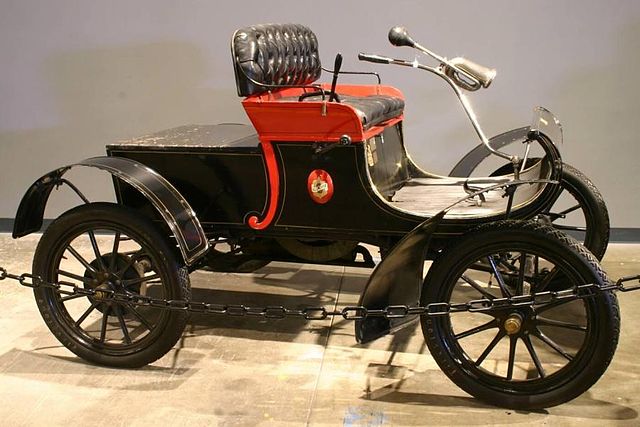Automotive navigation system
An automotive navigation system is part of the automobile controls or a third party add-on used to find direction in an automobile. It typically uses a satellite navigation device to get its position data which is then correlated to a position on a road. When directions are needed routing can be calculated. On the fly traffic information can be used to adjust the route.
A GPS system designed by Philips in a 1995 Opel Omega vehicle
Car controls are the components in automobiles and other powered road vehicles, such as trucks and buses, used for driving and parking.
In the Ford Model T, the standing pedals control the two forward gears (left pedal), reverse (center pedal), and the brake (right pedal). The steering-column levers control ignition timing (left) and the throttle (right). The large hand-levers set the rear-wheel parking brake and put the transmission in neutral (left) and control an after-market 2-speed transmission adapter (right).
1904 Oldsmobile Curved Dash with a tiller steering
Standing pedals in a Saab Sonett. Pedals either hang from the bulkhead or stand on the floor. The arrangement is the same for both right- and left-hand traffic.
1969 Citroen DS Pallas interior with hydraulic gear selector mounted top right of steering column with a single spoke steering wheel. Note the so-called mushroom brake pedal. (The pedal on the left is the parking brake).





